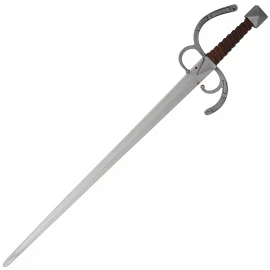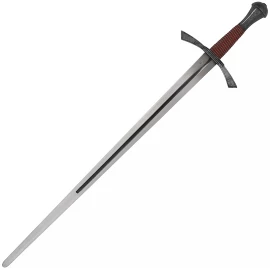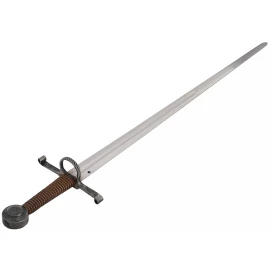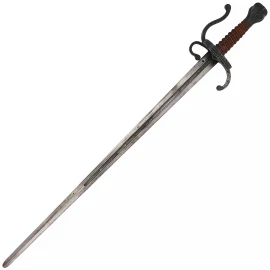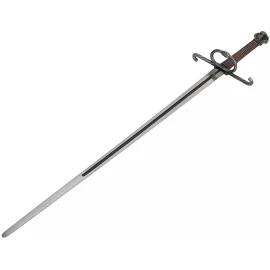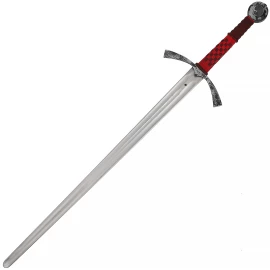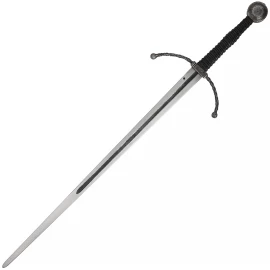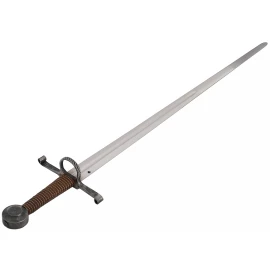Renaissance swords
Filter products
Renaissance swords
The estoc sword became popular because of its ability to thrust into the gaps between plates of armour. A number of manuscripts covering longsword combat and techniques dating from the 13th–16th centuries provideng extensive information on longsword combatives as used throughout this period.
In the 16th century, the large zweihänder was used by the elite German and Swiss mercenaries. The also used katzbalgers, which means 'cat-gutter'. The katzbalger's S-shaped guard and 2-foot-long (0.61 m) blade made it perfect for bringing in when the fighting became too close to use a zweihänder.
Civilian use of swords became increasingly common during the late Renaissance, with duels being a preferred way to honourably settle disputes. The practice of civilian duelling, with specifically designed civilian swords such as the Italian Cinquedea and Swiss Baselard, became popular.
The side-sword was a type of war sword used by infantry during the Renaissance of Europe. This sword was a direct descendant of the arming sword. Quite popular between the 16th and 17th centuries, they were ideal for handling the mix of armoured and unarmoured opponents of that time. A new technique of placing one's finger on the ricasso to improve the grip (a practice that would continue in the rapier) led to the production of hilts with a guard for the finger. This sword design eventually led to the development of the civilian rapier, but it was not replaced by it, and the side-sword continued to be used during the rapier's lifetime. As it could be used for both cutting and thrusting, the term cut and thrust sword is sometimes used interchangeably with side-sword.
Also of note, side-swords used in conjunction with bucklers became so popular that it caused the term swashbuckler to be coined. This word stems from the new fighting style of the side-sword and buckler which was filled with much "swashing and making a noise on the buckler".
Within the Ottoman Empire, the use of a curved sabre called the Yatagan started in the mid-16th century. It would become the weapon of choice for many in Turkey and the Balkans. The sword in this time period was the most personal weapon, the most prestigious, and the most versatile for close combat, but it came to decline in military use as technology, such as the crossbow and firearms changed warfare. However, it maintained a key role in civilian self-defence.

